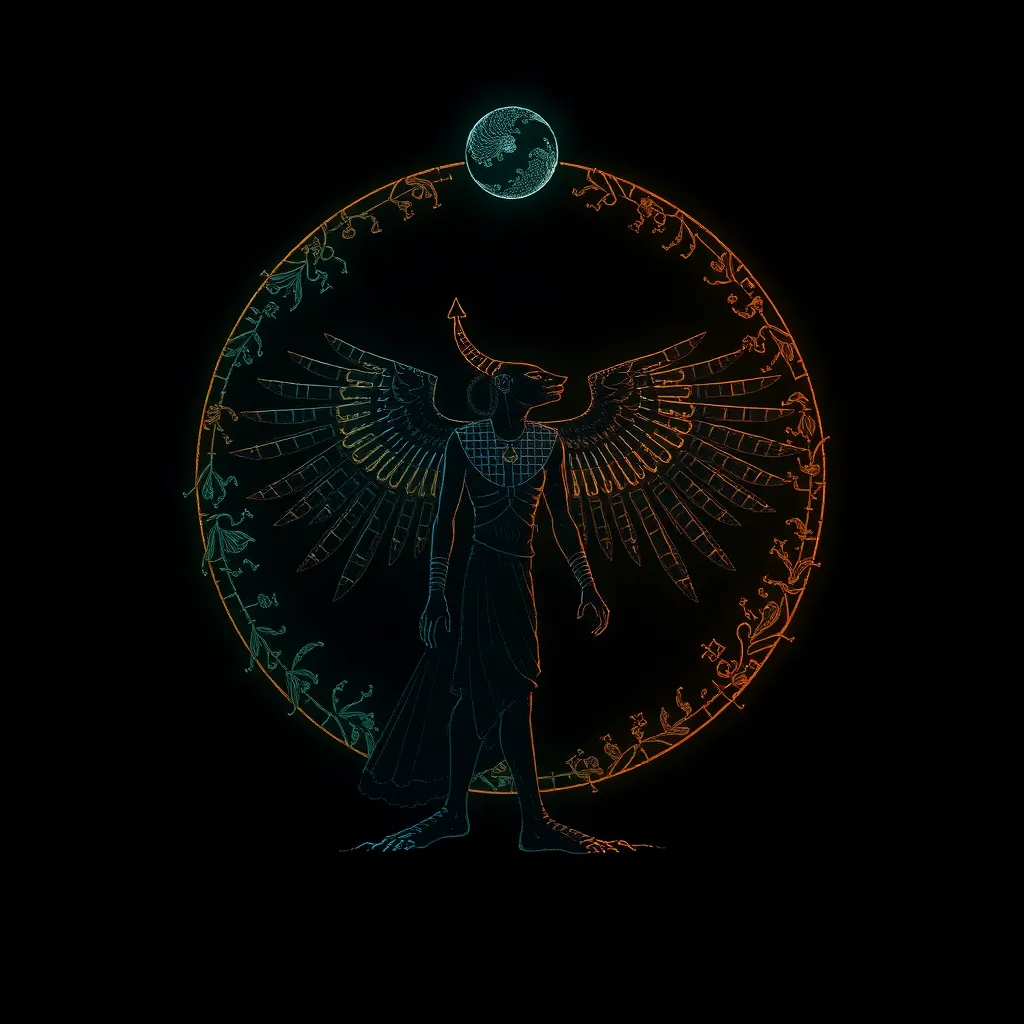The Aten and the Cycle of Life and Death
I. Introduction
The Aten, a unique deity in ancient Egyptian religion, holds a significant place in the pantheon of gods worshipped by the ancient Egyptians. As the embodiment of the sun’s disk, the Aten represents light, life, and the creative power of the sun. This article explores the Aten’s role within the context of the cycle of life and death, a central theme in Egyptian belief systems.
The cycle of life and death is integral to understanding ancient Egyptian spirituality, emphasizing the continuity and interdependence of existence. In this article, we will delve into the historical context of the Aten, its symbolism, and its relation to the cycles of life, death, and immortality.
II. Historical Context of the Aten
The rise of the Aten is notably marked during the reign of Pharaoh Akhenaten (circa 1353-1336 BCE), who established a form of monotheism centered around the worship of the Aten. This represented a significant departure from traditional Egyptian polytheism, which included a vast array of gods and goddesses.
Unlike the traditional gods, who were often associated with specific domains and had complex mythologies, the Aten was a more abstract representation of the sun. Akhenaten promoted the Aten as the sole deity, emphasizing its life-giving properties. This shift led to a radical transformation in Egyptian religious practices and artistic expressions.
III. Symbolism of the Aten
The Aten symbolizes light and creation, embodying the essential force that sustains life on Earth. Its artistic representations often depict the sun’s rays as hands reaching down to bless and nourish humanity, signifying the connection between the divine and mortal realms.
- Artistic representations: The Aten is frequently depicted as a sun disk with rays extending towards the earth, often featuring hands that offer ankh symbols, representing life.
- The sun’s daily cycle: The daily journey of the sun across the sky, rising in the east and setting in the west, symbolizes the cyclical nature of life, death, and rebirth.
IV. The Cycle of Life in Egyptian Beliefs
Life in ancient Egypt was deeply intertwined with the natural rhythms of the Nile River, particularly its annual flooding. This flooding was critical for agriculture, providing fertile soil for crops and sustaining the population.
The Aten played a vital role in this process, as its life-giving rays were believed to facilitate agricultural fertility and growth. Myths and stories, such as those surrounding Osiris, illustrate the importance of the cycle of life, where death leads to regeneration and new life.
V. The Cycle of Death in Egyptian Beliefs
In ancient Egyptian culture, the concept of the afterlife is foundational. Death was not seen as an end but rather a transition to another phase of existence. The Aten’s influence permeated funerary practices and rituals, emphasizing the importance of honoring the dead and ensuring their successful journey to the afterlife.
- Funerary practices: Rituals included offerings to the Aten, and tombs were adorned with imagery that highlighted the sun’s role in guiding the deceased.
- Death and rebirth: The cyclical nature of existence is mirrored in the belief that the deceased could be reborn, much like the sun rises each day.
VI. The Aten and the Concept of Immortality
The pursuit of eternal life is a central theme in ancient Egyptian spirituality, with the Aten symbolizing the hope for immortality. The Aten’s rays were seen as a means to achieve a lasting presence in the afterlife.
Connections between the Aten and the afterlife journey are evident in tomb art, where inscriptions often include prayers and hymns directed towards the Aten, seeking its favor and guidance.
- Tomb art: Scenes depicting the deceased receiving blessings from the Aten serve as a reminder of the divine connection that persists beyond death.
- Inscriptions: Many tombs feature inscriptions that highlight the Aten’s role in granting eternal life, underscoring the belief in the continuity of existence.
VII. The Legacy of the Aten in Later Egyptian Thought
The influence of the Aten extended beyond Akhenaten’s reign, leaving a lasting impact on subsequent religious beliefs and practices in ancient Egypt. The themes of light, life, and immortality continued to resonate in later spiritual systems.
Moreover, the Aten’s monotheistic elements are thought to have contributed to the development of later monotheistic traditions, including aspects of Judaism and Christianity. The enduring relevance of the Aten’s themes can be seen in modern spirituality, where the interconnectedness of life and the divine continues to be explored.
VIII. Conclusion
The Aten holds significant importance in the understanding of the cycle of life and death within ancient Egyptian mythology. As a symbol of life, light, and immortality, the Aten represents the intricate connections between existence, the natural world, and the divine.
The enduring influence of ancient Egyptian beliefs is a testament to the complexity and richness of their spiritual worldview, highlighting the timeless themes of life, death, and the quest for eternal existence. The interconnectedness of these themes continues to inspire reflection and exploration in both historical and contemporary contexts.




